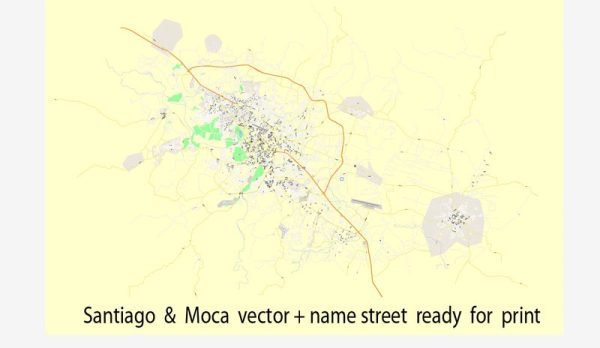Santiago, located in the Dominican Republic, is known for its rich biodiversity and natural beauty. The region’s diverse ecosystems support a wide variety of plant and animal species. Here’s a general description of the biodiversity in the Santiago and surrounding areas:
- Flora:
- Tropical Rainforests: Santiago is surrounded by lush rainforests with a high diversity of plant species. You can find a variety of tropical trees, including mahogany, royal palm, ceiba, and various hardwood species.
- Orchids: The Dominican Republic is home to many orchid species, and Santiago is no exception. These exquisite flowers can be found throughout the region.
- Fauna:
- Birds: Santiago is a birdwatcher’s paradise. You can spot a wide range of avian species, including parrots, trogons, woodpeckers, and various migratory birds.
- Reptiles and Amphibians: The region is inhabited by reptiles like iguanas, anoles, and snakes, as well as various amphibians like frogs and toads.
- Mammals: Although many of the larger mammals have become rare due to habitat loss, you can still find species like hutias, bats, and a variety of small mammals.
- Insects: Santiago’s diverse ecosystem supports numerous insect species, including butterflies, dragonflies, and various beetles.
- Marine Life: While Santiago itself is not a coastal city, the Dominican Republic’s coastline is not far away. The surrounding seas are home to a variety of marine life, including coral reefs, fish species, and sea turtles.
- Protected Areas: In and around Santiago, you can find several protected areas and national parks, such as the Armando Bermúdez National Park and the Ebano Verde Scientific Reserve, which are essential for the conservation of the region’s biodiversity.
- Endemic Species: The Dominican Republic has several endemic species, meaning they are found nowhere else in the world. While many are threatened, conservation efforts are in place to protect these unique plants and animals.
It’s important to note that biodiversity in Santiago, like many other places, faces threats from habitat destruction, pollution, and climate change. Conservation efforts and sustainable practices are crucial to preserving the region’s natural beauty and unique ecosystems.


 Author: Kirill Shrayber, Ph.D.
Author: Kirill Shrayber, Ph.D.